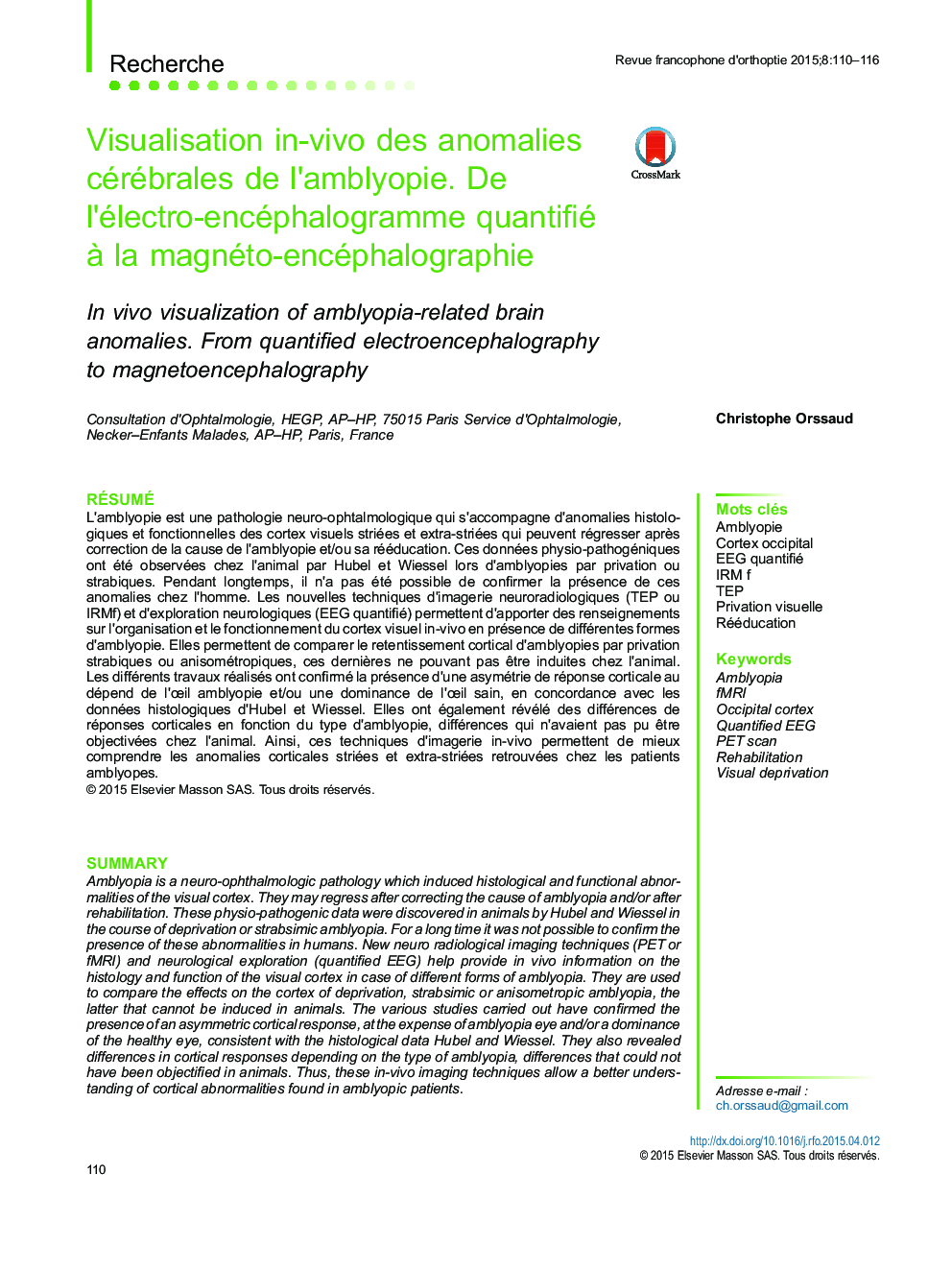| Article ID | Journal | Published Year | Pages | File Type |
|---|---|---|---|---|
| 2698316 | Revue Francophone d'Orthoptie | 2015 | 7 Pages |
Abstract
Amblyopia is a neuro-ophthalmologic pathology which induced histological and functional abnormalities of the visual cortex. They may regress after correcting the cause of amblyopia and/or after rehabilitation. These physio-pathogenic data were discovered in animals by Hubel and Wiessel in the course of deprivation or strabsimic amblyopia. For a long time it was not possible to confirm the presence of these abnormalities in humans. New neuro radiological imaging techniques (PET or fMRI) and neurological exploration (quantified EEG) help provide in vivo information on the histology and function of the visual cortex in case of different forms of amblyopia. They are used to compare the effects on the cortex of deprivation, strabsimic or anisometropic amblyopia, the latter that cannot be induced in animals. The various studies carried out have confirmed the presence of an asymmetric cortical response, at the expense of amblyopia eye and/or a dominance of the healthy eye, consistent with the histological data Hubel and Wiessel. They also revealed differences in cortical responses depending on the type of amblyopia, differences that could not have been objectified in animals. Thus, these in-vivo imaging techniques allow a better understanding of cortical abnormalities found in amblyopic patients.
Keywords
Related Topics
Health Sciences
Medicine and Dentistry
Ophthalmology
Authors
Christophe Orssaud,
